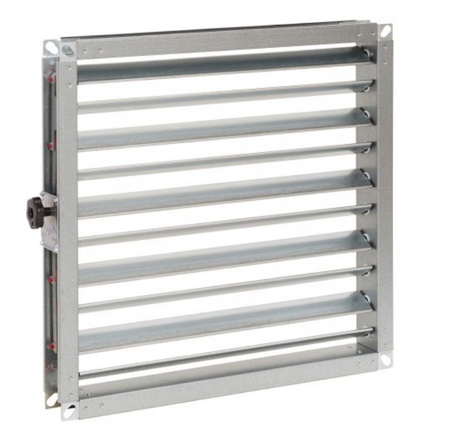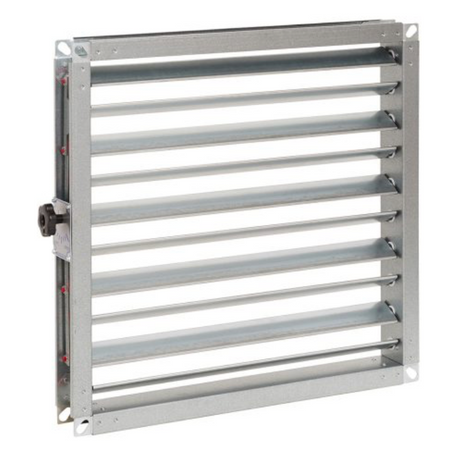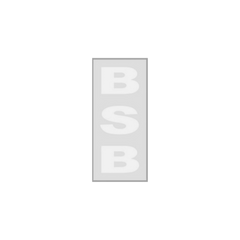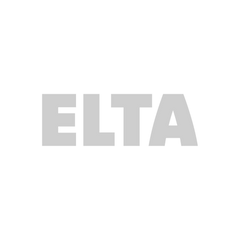Shop All
RVC Series - Galvanised Steel Blades, Hand Operated
From £30.46 excl. VATUnit price excl. VAT /UnavailableAdvanced Air 1400SP Volume Control Damper - Unsealed Galvanised Blade, Galvanised Casing
From £31.09 excl. VATUnit price excl. VAT /UnavailableAdvanced Air 1400SP Volume Control Damper - Unsealed Stainless Steel Blade, Galvanised Casing
From £40.33 excl. VATUnit price excl. VAT /UnavailableETD Series, Flangefit, 430 Grade Stainless Steel Blades Extended Spindle
From £85.50 excl. VATUnit price excl. VAT /UnavailableETD Series, Circular Spigotfit, Galvanised Blades, Hand Operated
From £74.70 excl. VATUnit price excl. VAT /UnavailableETD Series, Circular Spigotfit, 430 Grade Stainless Steel Blades, Hand Operated
From £93.39 excl. VATUnit price excl. VAT /UnavailableETD Series, Spigotfit, Galvanised Blades Extended Spindle
From £75.23 excl. VATUnit price excl. VAT /UnavailableETD Series, Circular Spigotfit, Galvanised Blades Extended Spindle
From £74.70 excl. VATUnit price excl. VAT /UnavailableETD Series, Spigotfit, 430 Grade Stainless Steel Blades Extended Spindle
From £94.04 excl. VATUnit price excl. VAT /UnavailableETD Series, Circular Spigotfit, 430 Grade Stainless Steel Blades Extended Spindle
From £93.39 excl. VATUnit price excl. VAT /UnavailableVC Series, Flat Oval Spigotfit, Galvanised Steel Blades, Hand Operated
From £56.55 excl. VATUnit price excl. VAT /UnavailableVC Series, Circular Spigotfit, 430 Grade Stainless Steel Blades, Hand Operated
From £37.06 excl. VATUnit price excl. VAT /UnavailableVC Series, Flat Oval Spigotfit, 430 Grade Stainless Steel, Hand Operated/Extended Spindle
From £69.42 excl. VATUnit price excl. VAT /UnavailableETD Series, Flat Oval Spigotfit, 430 Grade Stainless Steel Extended Spindle
From £69.42 excl. VATUnit price excl. VAT /UnavailableVC Series, Spigotfit, 430 Grade Stainless Steel Blades Extended Spindle
From £53.56 excl. VATUnit price excl. VAT /UnavailableVC Series, Flangefit, 430 Grade Stainless Steel Blades Extended Spindle
From £46.73 excl. VATUnit price excl. VAT /Unavailable
Brands
Find out more about Volume Control Damper
General Information
General Information
Volume Control Dampers play a pivotal role in ensuring fire safety, smoke control and efficient ventilation within modern buildings. Volume Control Dampers function to control airflow and create separate zones in ducted systems which enables both safety and comfort requirements to be met. Smoke and fire variants are specified and tested to BS EN 1366 and coordinated with the alarm system to ensure timely closure. The selection process includes evaluation of casing leakage and blade sealing and pressure drop. (contractors must ensure compliance with the Electricity at Work Regulations 1989, PUWER 1998, and HSG85 safe working practices)
Installation focuses on orientation, blade access and sealing to the duct/partition to preserve fire resistance and air leakage. The commissioning process needs to confirm that both the position indicator shows correct readings and the actuator operates properly and the panel and BMS systems report correctly. The implementation of documented maintenance procedures helps organisations maintain asset reliability from start to finish of its operational period. The dampers serve functions that go past simple airflow control because they play a crucial role in meeting various British and European standards for safety and performance and sustainability. (commissioning must comply with CIBSE Commissioning Codes, BSRIA BG 49/2015, and relevant fire safety guidance such as BS 9999 and Approved Document B) (contractors must ensure compliance with the Electricity at Work Regulations 1989, PUWER 1998, and HSG85 safe working practices)
Fire dampers (including those with airflow control functions) are tested under BS EN 1366-2, which specifies fire resistance tests for dampers to ensure they can withstand elevated temperatures and maintain compartmentation during a fire. Smoke control dampers are tested and certified to BS EN 12101-8, the harmonised European product standard that defines performance and construction requirements for smoke control systems to maintain safe evacuation routes. Compliance with these standards provides the accepted route to demonstrating conformity with the fire resistance and smoke control requirements of UK Building Regulations Approved Document B (Fire Safety). In parallel, BS 9999 sets out a risk-based framework for building fire safety design and management, in which dampers are key components of compartmentation and smoke control strategies.
Volume Control Dampers (VCDs), when not required to provide fire or smoke resistance, are not tested to BS EN 1366 or BS EN 12101. Instead, they are assessed against HVAC performance standards such as BS EN 1751:2014, which specifies aerodynamic and air leakage testing and BS EN 1507 / BS EN 12237, which set ductwork performance and leakage class requirements. These standards ensure that VCDs provide accurate and reliable airflow regulation within ventilation systems, even though they are not life safety components.
From a ventilation and energy-saving perspective, Volume Control Damper also contribute significantly to compliance with Approved Document F of the UK Building Regulations, which covers ventilation requirements for indoor air quality. The system depends on high-performance dampers to stop air leaks, which results in effective air distribution throughout the building and reduced energy consumption. The Ecodesign Directive (EU Regulation 1253/2014) requires energy-efficient design for ventilation units and their components, which this directly supports. The implementation of dampers for system efficiency optimisation leads to cost savings and emission reduction which helps organisations achieve their sustainability targets by meeting BREEAM and BREEAM certification (LEED may be referenced in international projects but BREEAM is the UK standard) certification standards.
Volume Control Dampers find practical applications in numerous sectors, which include commercial office buildings as well as healthcare facilities, educational institutions and industrial environments. The equipment serves a vital role in hospitals and laboratories because it helps preserve sterile environments and limits smoke transmission. The implementation of energy performance standards together with life safety requirements in residential and mixed-use developments leads to compliance which creates a sense of security for building occupants. Modern HVAC systems and fire protection systems need dampers to operate because they control airflow and protect against smoke spread and maintain system operation during emergencies.
Volume Control Damper represents the culmination of advanced engineering principles and safety standards and energy-efficient design practices. These systems serve as essential investments which protect buildings from non-compliance and risks while delivering ongoing operational efficiency and sustainability benefits to properties throughout the UK and European region.
Frequently Asked Questions
What should engineers verify about leakage class and casing tightness when specifying Volume Control Dampers?
What should engineers verify about leakage class and casing tightness when specifying Volume Control Dampers?
Engineers should check compliance with BS EN 1751 for leakage and casing tightness. Performance requirements must be set out in design documentation, with casing tested for both air leakage and strength under system pressures. O&M records should include product data, leakage class and inspection intervals. (inspection and maintenance frequencies should also align with SFG20 and BS 9999 requirements)
This answer references a standard(s) that are relevant. There may however be many other standards that need to be considered. We recommend you refer to our technical bulletins for more detailed references to applicable standards but also you should check with your professional consultants and the approving authorities prior to purchasing to check compliance.
Please see the Dampers Technical Bulletin for more information.
During installation, how should contractors handle BS EN 1366 fire testing evidence on Volume Control Dampers?
During installation, how should contractors handle BS EN 1366 fire testing evidence on Volume Control Dampers?
Contractors must ensure that installation matches the tested BS EN 1366 configuration where fire-rated dampers are required. This includes sealing into the partition, correct fixings and use of approved fire stopping materials. Certification evidence and installation photos should be compiled into the O&M pack. (fire stopping should comply with UK Building Regulations and be backed by third-party certification under BS EN 1366)
This answer references a standard(s) that are relevant. There may however be many other standards that need to be considered. We recommend you refer to our technical bulletins for more detailed references to applicable standards but also you should check with your professional consultants and the approving authorities prior to purchasing to check compliance.
Please see the Dampers Technical Bulletin for more information.
Which standards or guidance affect actuator failsafe selection (spring-return) for Volume Control Dampers?
Which standards or guidance affect actuator failsafe selection (spring-return) for Volume Control Dampers?
Actuator choice should be guided by BS EN 1751 for performance, with spring-return or failsafe options considered where dampers must return to a known safe position. Fire-rated applications must also align with BS EN 1366, ADB, BS9999 and the project fire strategy.
This answer references a standard(s) that are relevant. There may however be many other standards that need to be considered. We recommend you refer to our technical bulletins for more detailed references to applicable standards but also you should check with your professional consultants and the approving authorities prior to purchasing to check compliance.
Please see the Dampers Technical Bulletin for more information.
What common mistakes occur with position indication and end-switches, and how can they be avoided?
What common mistakes occur with position indication and end-switches, and how can they be avoided?
Frequent mistakes include miswiring, poor accessibility for maintenance, or not integrating switches into the BMS. Avoidance requires specifying position feedback early, confirming compatibility during installation and verifying signal operation in commissioning.
How does installation orientation and blade direction influence commissioning and sign-off?
How does installation orientation and blade direction influence commissioning and sign-off?
(commissioning must comply with CIBSE Commissioning Codes, BSRIA BG 49/2015, and relevant fire safety guidance such as BS 9999 and Approved Document B)
Incorrect orientation or blade direction can lead to excessive leakage, uneven airflow, or system instability. Designers must set out requirements clearly, and contractors should confirm correct installation with airflow testing at commissioning.
What evidence should be recorded in O&M packs regarding sealing to duct and partition?
What evidence should be recorded in O&M packs regarding sealing to duct and partition?
O&M packs should include fire stopping certification, details of sealant or gaskets used, photos of installed dampers and results of any pressure or leakage tests. This ensures traceability and compliance with compartmentation requirements. (fire stopping should comply with UK Building Regulations and be backed by third-party certification under BS EN 1366)
In retrofit projects, how are access doors for reset and maintenance typically approached?
In retrofit projects, how are access doors for reset and maintenance typically approached?
Access hatches must be designed to allow inspection, adjustment, and damper resetting. In retrofit works, contractors often need to add additional access points, with their positions documented for the O&M logbook.
What site constraints limit pressure drop and system effect, and how can these be mitigated?
What site constraints limit pressure drop and system effect, and how can these be mitigated?
Constraints include short duct runs, damper clustering or high velocities. Mitigation strategies involve allowing sufficient straight duct before/after dampers, selecting low-pressure-drop design and verifying effects during system balancing.
How can teams troubleshoot issues arising from alarm interface and cause & effect?
How can teams troubleshoot issues arising from alarm interface and cause & effect?
Teams should review the wiring diagram, confirm mapping against the cause & effect matrix and test alarm signals under witnessed conditions. Any discrepancies between the design intent and installed system must be corrected before handover.
What safety measures relate to fire stopping and partition integrity when working on Volume Control Dampers?
What safety measures relate to fire stopping and partition integrity when working on Volume Control Dampers?
(fire stopping should comply with UK Building regulations, ADB and BS9999 – manufacturers instructions should be followed.)
Contractors must maintain the fire resistance of the partition or duct using tested fire stopping solutions. Hot works must be controlled, access should be safe and all reinstatement documented. (fire stopping should comply with UK Building Regulations and be backed by third-party certification under BS EN 1366) (contractors must ensure compliance with the Electricity at Work Regulations 1989, PUWER 1998, and HSG85 safe working practices)
This answer references a standard(s) that are relevant. There may however be many other standards that need to be considered. We recommend you refer to our technical bulletins for more detailed references to applicable standards but also you should check with your professional consultants and the approving authorities prior to purchasing to check compliance.
Please see the Dampers Technical Bulletin for more information.
What should engineers verify about closure time when specifying Volume Control Dampers?
What should engineers verify about closure time when specifying Volume Control Dampers?
Where dampers form part of fire or smoke control, closure times must meet project fire strategy requirements. Engineers should verify actuator performance against specification and ensure closure is validated during commissioning.
During installation, how should contractors handle certification, labelling, and traceability?
During installation, how should contractors handle certification, labelling, and traceability?
Each damper should carry a permanent label and certificate reference. Contractors must maintain a schedule of serial numbers and locations, verified at handover and included in the O&M documentation.
Which standards or guidance affect inspection frequency and logbooks?
Which standards or guidance affect inspection frequency and logbooks?
Inspection frequency should follow BS 9999 and project fire strategy requirements, with at least annual checks. Logbooks should record inspection results, corrective actions, and any changes to damper settings. (inspection and maintenance frequencies should also align with SFG20 and BS 9999 requirements).
Careful consideration should be given to High-Risk Residential Buildings (HRRBs) as these may require more frequent testing.
This answer references a standard(s) that are relevant. There may however be many other standards that need to be considered. We recommend you refer to our technical bulletins for more detailed references to applicable standards but also you should check with your professional consultants and the approving authorities prior to purchasing to check compliance.
Please see the Dampers Technical Bulletin for more information.
What common mistakes occur with volume control dampers vs smoke or fire damper roles, and how can they be avoided?
What common mistakes occur with volume control dampers vs smoke or fire damper roles, and how can they be avoided?
A key mistake is misapplying volume control dampers as smoke or fire dampers without certification. This can be avoided by clearly distinguishing roles at design stage, using certified products where required and checking compliance documentation.
How does high-velocity duct performance influence commissioning and sign-off?
How does high-velocity duct performance influence commissioning and sign-off?
(commissioning must comply with CIBSE Commissioning Codes, BSRIA BG 49/2015, and relevant fire safety guidance such as BS 9999 and Approved Document B)
At high velocities, dampers may generate noise, turbulence or leakage. Commissioning must confirm pressure drop and system performance, and sign-off should only occur once airflow measurements align with design expectations.
What evidence should be recorded in O&M packs regarding manual release provisions?
What evidence should be recorded in O&M packs regarding manual release provisions?
Documentation should include damper models, the location of manual overrides, commissioning results proving operation and user instructions for safe access and resetting. (commissioning must comply with CIBSE Commissioning Codes, BSRIA BG 49/2015, and relevant fire safety guidance such as BS 9999 and Approved Document B) (contractors must ensure compliance with the Electricity at Work Regulations 1989, PUWER 1998, and HSG85 safe working practices)
In retrofit projects, how is BMS status mapping and alarms typically approached?
In retrofit projects, how is BMS status mapping and alarms typically approached?
Retrofit integration requires careful alignment of damper feedback signals with existing BMS points. Commissioning must validate correct mapping and revised cause & effect schedules should be issued for handover. (commissioning must comply with CIBSE Commissioning Codes, BSRIA BG 49/2015, and relevant fire safety guidance such as BS 9999 and Approved Document B)
What site constraints limit acoustic impact and breakout, and how can these be mitigated?
What site constraints limit acoustic impact and breakout, and how can these be mitigated?
Dampers close to occupied areas can generate noise. Mitigation includes selecting low-noise damper types, applying acoustic linings or adjusting duct layouts. Post-installation acoustic testing should confirm performance.
How can teams troubleshoot issues arising from multi-damper coordination on risers?
How can teams troubleshoot issues arising from multi-damper coordination on risers?
Simultaneous damper operation can create unwanted pressure fluctuations. Solutions include sequencing actuator responses, resizing ductwork or testing staged operation during commissioning. (commissioning must comply with CIBSE Commissioning Codes, BSRIA BG 49/2015, and relevant fire safety guidance such as BS 9999 and Approved Document B)
What safety measures relate to retrofit into existing shafts when working on Volume Control Dampers?
What safety measures relate to retrofit into existing shafts when working on Volume Control Dampers?
(contractors must ensure compliance with the Electricity at Work Regulations 1989, PUWER 1998, and HSG85 safe working practices)
Retrofit works must preserve shaft compartmentation and comply with fire stopping requirements. Contractors should apply lock-off procedures, ensure safe working access and record reinstatement evidence in O&M documentation.

























